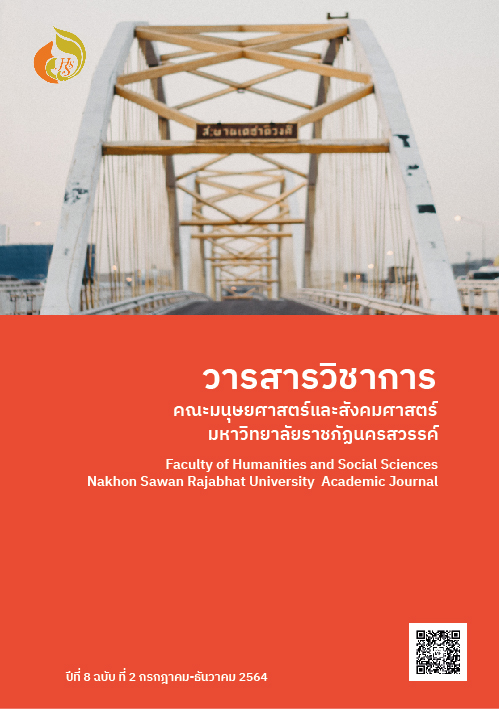“Himmapan” Symphonic Poem for the trombone ensemble: The Cycle Process
Main Article Content
Abstract
“Himmapan” Symphonic Poem for the trombone ensemble: The Cycle Process. It was a creative researched to composed a symphonic poem type of music for a trombone. The researcher was inspired to travel in the Himmapan forest. which was a forest in literature and belief in Triphum according to the beliefs of Buddhism and Brahmins–Hinduism (Triphum:2555). It was believed that the Himmapan Forest is a place It was covered with snow all year round, located in the Indian subcontinent. Consisting of 7 sacred ponds, each pond was also home to the creatures that have a cycle of death and birth. The researcher has proposed ideas and content with 3 composing experts, resulting in the creation of songs. “Himmapan” was the structure and concept of the Symphonic Poem song for the trombone band.
In the first movement; The Cycle Process: the researcher chooses to use ternary form; an introduction and section A represent the main melody of this movement. Section B was the development of melody and harmony. Finally, the return of section A' combined with the coda of the song. Therefore, the researcher used a quintal harmony and using the C and G pentatonic scales and extended technique for trombones, non-standard glissando to mimic the sounds of Himmapan creatures. When you listen to this song, you will get a taste of the sultry and exotic sound.
Article Details

This work is licensed under a Creative Commons Attribution-NonCommercial-NoDerivatives 4.0 International License.
References
กรฤต นิลวานิช. (2563). วารสารวิชาการ คณะมนุษยศาสตร์และสังคมศาสตร์ มหาวิทยาลัยราชภัฏนครสวรรค์, ปีที่ 7(ฉบับที่ 2), 182-199.
กรมศิลปากร. (2564). สมุดภาพสัตว์หิมพานต์. กรุงเทพฯ: สำนักหอสมุดแห่งชาติ.
กรมศิลปากร. (2555). ไตรภูมิกถาฉบับถอดความ. กรุงเทพฯ: กรมศิลปากร.
ณรงค์ฤทธิ์ ธรรมบุตร. (2552). การประพันธ์เพลงร่วมสมัย. กรุงเทพฯ: จุฬาลงกรณ์มหาวิทยาลัย.
ณัชชา พันธุ์เจริญ. (2553). ศัพท์ดนตรีปฏิบัติ. กรุงเทพฯ: ศูนย์หนังสือแห่งจุฬาลงกรณ์มหาวิทยาลัย.
ปิยวัตน์ หลุยลาภประเสริฐ. (2558). Three pieces for Three Instruments. กรุงเทพ: มหาวิทยาลัยมหิดล.
ส.พลายน้อย. (2539). สัตว์หิมพานต์. กรุงเทพ: สำนักพิมพ์ต้นอ้อ.
ไชยยัณห์ สละบัวเลย. (2019). สัตว์หิมพานต์ในศตวรรษที่ 21. นครปฐม: มหาวิทยาลัยศิลปากร.
Adam, Jame Max. (2008). Timbral Diversity: An Annotated Bibliography of Selected Solo Works for The Tenor Trombone Containing Extended Technique. United States: University of Northern Colorado.
Arban, Jean Baptiste. (2002). Standard Technique in Complete Method for Trombone and Euphonium. Edited by Wesley Jacobs. United States: Encore Music Publishers.
Cage, John. (1960). Solo for Sliding Trombone (1958). New York: Menmar Press.
Leon, Botstein. (2001). Modernism in The New Grove Dictionary of Music and Musicians. United States: Oxford University Press.
Will Kimbal. (2020). Trombone History. Accessed 10 May, 2021, Available from http://kimballtrombone.com/trombone-history-timeline/trombone-history-15th-century/


